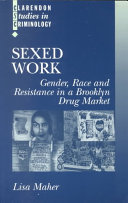
Sexed Work
By - Maher, Lisa.
Floor
-
Floor 1
Published
-
Oxford ; New York : Clarendon Press, 1997.
ISBN 10 - 0198299311
ISBN 13 - 9780198299318
Book Status
-
5 Qnty Available with us.
Shelf No
-
14
Call Number
-
305.4896 MAH
Physical Description
-
xiii, 279 p. ; 23 cm.
Notes
-
Based on the author's thesis (Ph.D.--Rutgers Univ.), 1995. Includes bibliographical references (p. [233]-265) and index.